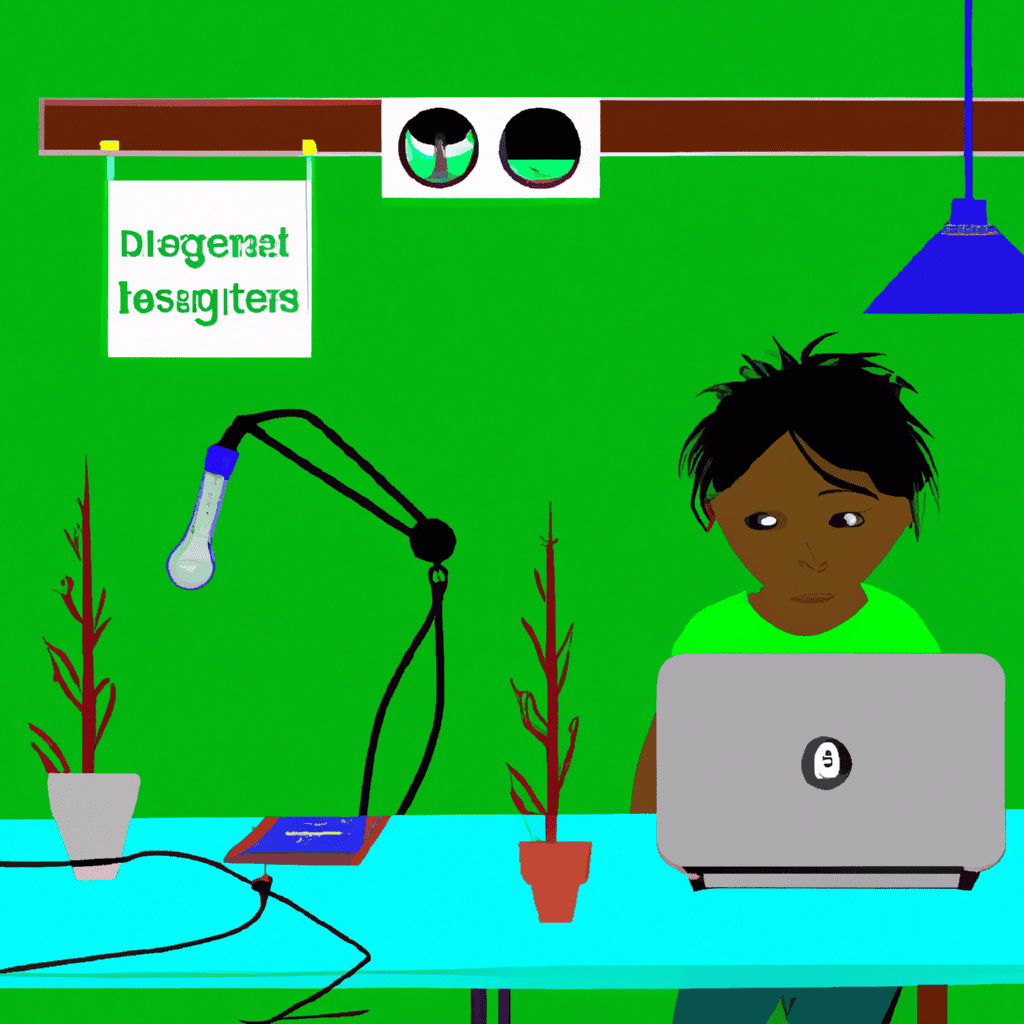In today’s world, energy conservation has become a crucial topic of discussion. As the global population grows, the demand for energy increases, leading to the depletion of natural resources and the production of harmful greenhouse gases. As students, we have a responsibility to conserve energy and protect the environment for future generations.
By adopting simple energy-saving habits, we can reduce our carbon footprint and contribute to a sustainable future. This article aims to provide practical tips and suggestions for students on how to conserve energy. From turning off electronics when not in use to using energy-efficient appliances, we will explore various ways to reduce energy consumption in our daily lives.
By following these guidelines, we can not only save money on our bills but also make a positive impact on the environment. So, let’s take a step towards a greener future and learn how to conserve energy as responsible students.
Turn Off Electronics When Not in Use
Conserving energy as a student can be achieved by adopting power saving strategies such as turning off electronics when not in use. This simple habit can significantly reduce energy consumption and promote a sustainable lifestyle. With the increasing use of electronic devices, the amount of energy consumed by students is also on the rise. However, by taking small measures such as turning off the lights and unplugging chargers, students can significantly reduce their energy consumption and contribute towards a greener planet.
To adopt energy efficient habits, students can also use power strips or smart plugs that automatically turn off electronics when they are not in use. This can save a significant amount of energy that is wasted on standby mode.
Additionally, students can also opt for energy-efficient electronic devices that consume less energy and have a longer lifespan. By adopting these practices, students can not only save energy but also reduce their carbon footprint. Conserving energy is not only beneficial for the environment but also for reducing energy bills and promoting a sustainable lifestyle.
Use Natural Light
Utilizing natural light sources can greatly reduce the amount of electricity used for lighting in academic settings. Not only does it help in conserving energy, but it also offers several benefits to students.
Here are some creative ways to incorporate natural light into your study routine:
-
Study near a window: Sit near a window and take advantage of the natural light coming in. This will not only help in reducing your energy consumption but also provide a refreshing change of scenery.
-
Go outside: Take your study materials outside and find a quiet spot. Whether it’s a park bench or a grassy area, being outside can offer a refreshing and stimulating environment.
-
Use reflective surfaces: If you don’t have access to a window or an outdoor area, you can still utilize natural light by using reflective surfaces. Place a mirror near your workspace or use a whiteboard to reflect light into the room.
In addition to reducing energy consumption, natural light also has several benefits for students. It can help improve mood and reduce stress levels, which can ultimately lead to increased productivity and better academic performance.
By incorporating natural light into your study routine, you can reap these benefits while also contributing to a more sustainable environment.
Turn Off Lights
Minimizing unnecessary lighting in academic settings can lead to a more sustainable and environmentally conscious approach to energy consumption. Turning off lights when leaving a room or using natural light instead of artificial light can significantly reduce energy consumption. When students make the conscious effort to minimize their use of lighting, they are not only reducing their ecological footprint but also saving on energy costs.
The benefits of natural light are not only limited to energy conservation but also have positive effects on a student’s overall well-being. Exposure to natural light has been linked to increased productivity, improved mood, and better sleep quality.
On the other hand, the impact of light pollution on energy conservation cannot be ignored. Light pollution not only wastes energy but also disrupts natural ecosystems and wildlife. As such, students can play a vital role in reducing light pollution by using lighting only when necessary.
Reduce Water Usage
Reducing water usage in academic settings is a practical and sustainable approach to promoting environmental consciousness and preserving the planet’s natural resources. The implementation of water saving techniques can significantly reduce the amount of water consumed by students, faculty, and staff.
Simple actions such as fixing leaky faucets, using low-flow showerheads, and turning off the tap when brushing teeth can make a significant difference in water conservation efforts. The impact of drought on water conservation cannot be overlooked. In regions where water is scarce, every drop counts.
Therefore, it is essential to adopt water-saving practices to alleviate the strain on natural resources. As a student, reducing water usage can also have a positive impact on personal finances, as it can lead to lower utility bills. By promoting a culture of water conservation in academic settings, students can take an active role in preserving the planet’s natural resources for future generations.
Use Energy-Efficient Appliances
Implementing energy-efficient appliances can lead to significant reductions in electricity costs and promote sustainability in academic environments. As a student, it is important to be mindful of energy usage in order to reduce costs and contribute to the preservation of the environment. Using energy-efficient appliances not only helps in reducing costs, but it also promotes a sustainable lifestyle that can benefit the environment in the long run.
Here are some energy-saving hacks that can help students conserve energy while using appliances:
- Unplug appliances when they are not in use.
- Use power strips to turn off multiple appliances at once.
- Keep appliances clean and well-maintained to ensure they run efficiently.
- Choose appliances with the ENERGY STAR label, which ensures they meet energy efficiency standards set by the U.S. Environmental Protection Agency.
By implementing these hacks and choosing energy-efficient appliances, students can make a significant impact on the environment and lower their electricity costs.
It is important to prioritize sustainability and energy conservation in academic environments to create a more sustainable future.
Adjust Thermostat
Using energy-efficient appliances is a great way to save energy and reduce your carbon footprint as a student. However, there are other ways to further reduce your energy consumption and lower your energy bills.
One of the most effective ways is by adjusting your thermostat to optimal temperature settings. By adjusting your thermostat, you can save up to 10% on your energy bills per year.
The optimal temperature settings for your home or apartment are between 68-72 degrees Fahrenheit during the winter and 78-80 degrees Fahrenheit during the summer. You can also program your thermostat to automatically adjust to your schedule, so you don’t have to remember to adjust it manually every time you leave or come back home.
By taking these small steps, you can save money on your energy bills and reduce your carbon footprint, all while maintaining a comfortable living environment.
Reduce Waste
Reducing waste is an important aspect of sustainability that individuals can contribute to in their daily lives.
One effective way to reduce waste is through recycling, which involves diverting materials from the landfill and reusing them to create new products.
Another approach is to use reusable containers, such as water bottles and food containers, to reduce the amount of single-use plastics and other materials that end up in the trash.
By implementing these practices, individuals can play a role in reducing their environmental impact and promoting a more sustainable future.
Recycle
Recycling is an effective strategy for reducing waste and conserving resources. By reusing materials, we can limit the amount of waste that ends up in landfills and reduce the need for new resources to be extracted from the earth. This process not only conserves energy but also reduces greenhouse gas emissions, which are a major contributor to climate change.
Creative recycling and upcycling projects are great ways for students to get involved in the recycling process. Upcycling involves taking something that would typically be considered waste and transforming it into something of higher value. For example, old t-shirts can be turned into reusable shopping bags, and glass jars can be decorated and used as candle holders.
These projects not only reduce waste but also promote creativity and allow students to showcase their artistic abilities. By incorporating recycling and upcycling into their daily lives, students can make a significant impact on the environment while also exploring their creative side.
Use Reusable Containers
Recycling is a great way to reduce waste and conserve energy, but there are other ways to make a significant impact. One of these ways is to use reusable containers. Not only does this help the environment, but it can also save you money in the long run.
There are many ways to reuse containers in an eco-friendly way. For example, instead of buying single-use plastic water bottles, invest in a reusable water bottle that you can fill up from the tap. You can also use reusable containers for snacks and meals, instead of buying pre-packaged items.
There are many eco-friendly storage solutions available, such as glass containers with snap-on lids or silicone bags that can be washed and reused. By using reusable containers, you can reduce your carbon footprint and make a positive impact on the environment.
Spread Awareness
Disseminating information about energy conservation through various channels, such as organizing events, social media campaigns, posters, and newsletters, can effectively raise awareness among students. Students are often unaware of the impact of their actions on the environment, and it is essential to educate them about the importance of conserving energy. By spreading awareness, students can learn to make small changes in their daily habits that can have a big impact on the environment.
Organizing events and social media campaigns can help reach a larger audience and create a community of students who are committed to conserving energy. By sharing information through posters and newsletters, students can learn about the benefits of energy conservation and ways to reduce their carbon footprint.
Spreading awareness about energy conservation can also lead to a culture of sustainability in schools and colleges, where students can come together to work towards a common goal of reducing energy consumption. This can lead to long-term benefits for the environment, as students become more aware of their impact on the planet and take steps to reduce it.
Conclusion
As a student, there are many ways to conserve energy and reduce your carbon footprint on the environment. One of the most effective ways to conserve energy is by turning off electronics when they are not in use. This simple act can save a lot of energy and reduce your electricity bill.
It is also important to use natural light whenever possible to reduce the amount of energy needed to light a room. Turning off lights when leaving a room is another effective way to conserve energy.
Reducing water usage is also an important part of energy conservation. Simple things like turning off the faucet while brushing your teeth or taking shorter showers can save a lot of water and energy.
Using energy-efficient appliances such as refrigerators, washing machines, and air conditioners is also an effective way to conserve energy. These appliances use less energy and can save you money in the long run.
Adjusting the thermostat to a lower temperature in the winter and a higher temperature in the summer can also help conserve energy. This can be achieved by using a programmable thermostat that automatically adjusts the temperature based on your schedule.
Finally, reducing waste and spreading awareness about the importance of energy conservation can help create a more sustainable future for all. By implementing these simple strategies, students can make a positive impact on the environment and help conserve energy for future generations.




